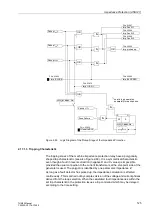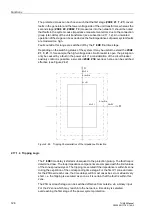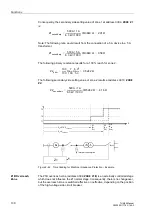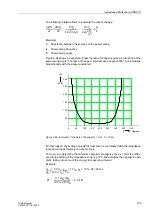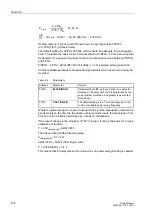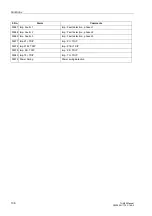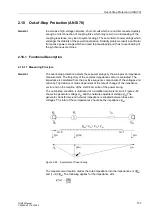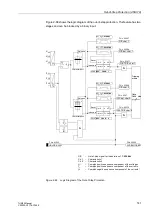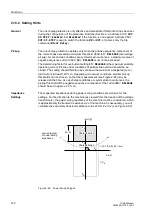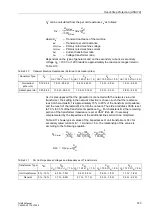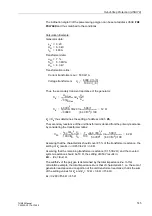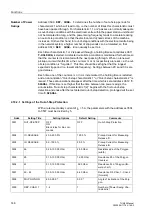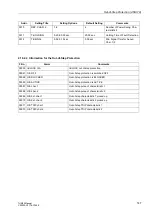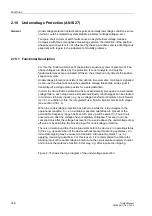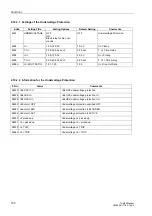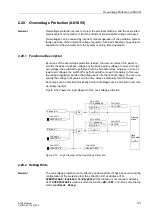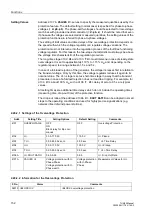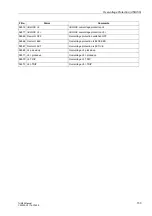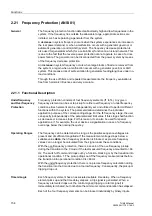
Out-of-Step Protection (ANSI 78)
139
7UM62 Manual
C53000-G1176-C149-3
Figure 2-66
Impedances at the Measurement Location m
2.18.1.2 Out-of-Step Logic
Figure 2-67 shows, more detailed, the power swing detection characteristic. The
inclination angle
ϕ
P
is assumed to be 90°. The setting parameters Z
a
, Z
b
, Z
c
and (Z
d
–
Z
c
) determine the rectangle. It is symmetrical as to its vertical axis. The limit or Z
b
reaches in reverse direction into the generator. The forward reaches are Z
c
) into the
unit transformer, and the second stage Z
d
) into the network system. Two
characteristics are available. The lower area, characteristic 1 (i.e. the non-hatched
area in Figure 2-67), covers the electrical centre being in the generator block until the
unit transformer, the hatched area, characteristic 2, discriminates the electrical centre
being in the network system. The point of crossing of the symmetry axis is decisive for
the assignment to the characteristic.
Power swings are three-phase symmetrical occurrences. The first prerequisite is
therefore the symmetry of the currents which is verified by evaluation of the negative
sequence current. A condition for power swing detection is that the positive sequence
component of the current exceeds an adjustable limit I
1
and the negative sequence
current remains below an adjustable value I
2
.
δ
=0°
(1–m)Z
tot
U
N
U
G
---------
0.7
=
U
N
U
G
---------
= 0.8
U
N
U
G
---------
= 1.0
U
N
U
G
---------
= 1.2
U
N
U
G
---------
= 1.3
δ
=0°
δ
=180°
δ
=180°
(0.5–m)Z
tot
ϕ
P
–mZ
tot
Z(
m)
Im(Z)
Re(Z)

